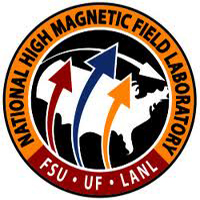
Think of it as a giant science festival, complete with cryogenic rocket cars, frozen flowers, shrinking quarters, ice cream cooled by liquid nitrogen, levitation and things that go boom.
It’s the MagLab’s annual open house — Tallahassee’s biggest family science event of the year — on Saturday, Feb. 16, from 10 a.m. to 3 p.m. at the National High Magnetic Field Laboratory, 1800 E. Paul Dirac Drive. Admission is free, but guests are encouraged to bring a canned good to donate to the Second Harvest of the Big Bend.
Some of the biggest and most powerful magnets on the planet are housed at the lab. During the open house, the MagLab’s more than 250 scientists and engineers will demonstrate complex science principles they use daily in the most fun ways they can dream up. There will be about 90 different science demonstrations going on simultaneously, and more than a dozen community partners with booths, demonstrations and experiments.
One of the lab’s most popular demonstrations is Einstein’s Ice Cream. Physicist Hans van Tol, who moved from Holland a decade ago in order to work with the MagLab’s cutting-edge electron magnetic resonance machines, will crank out gallons of ice cream faster than you’ve ever seen. While it may take 4 hours to make a regular batch of homemade ice cream, van Tol can whip up a half-gallon of vanilla, chocolate (or any other flavor) in eight minutes. How? He uses liquid nitrogen to make the cream freeze super fast.
“Most of the science we do here at the lab is done at very low temperatures, and so normally we use liquid nitrogen to cool down our experiments,” van Tol said. “But on this day, we use our liquid nitrogen to cool down the ice cream and make people happy.”
But there’s plenty for guests to do, too. They can set off a water rocket and manipulate the air pressure, amount of water and launch angle in order to change the speed and altitude of the rocket.
They can watch a pickle transmit electricity — and glow as it’s literally cooked in the process —or they can launch a potato from a special veggie cannon, a demonstration of the conservation of energy principle (i.e., that energy cannot be created or destroyed, but can be changed from one form to another)
Or perhaps they would rather experience a toroidal vortex. How? By aiming a giant, foot-wide smoke ring at a candle and trying to blow it out.
“The smoke ring is in fact a circulating doughnut-shaped mass of air and smoke which is technically referred to as a toroidal vortex,” said physicist Steve McGill, one of the scientists working the giant smoke-ring machine at the open house. “The circulation traps the air (and smoke) within it, and the mass of air moves through the atmosphere and carries momentum, which allows it to knock over light objects at a distance.”
If mighty machines captivate guests, they can witness the incredibly destructive power of a 2-tesla magnet as it flattens water jugs, or they can marvel over the lab’s 45 tesla magnet — the most powerful of its kind in the world (and the MagLab has the Guinness World Record to prove it!). Or they can witness a quarter shrink to the size of a dime with an impressive big bang.
There will be a variety of food trucks, too, and an open grill serving veggie burgers and hamburgers. And just down the street, there also will be two other open house events during the same 10 a.m. to 3 p.m. hours, both on Levy Street.
One is at the Center for Advanced Power Systems (CAPS), 2000 Levy Street. At CAPS, guests will find a variety of things to do and see — and they can even build their own extremely simple motor.
“It’s a good hands-on experience the kids really seem to enjoy,” said Steve McClellan, the deputy director of CAPS. When guests are finished making their motor, they can take it home with them, too.
Across the street from CAPS, the High-Performance Materials Institute, 2005 Levy Ave., is hosting its first-ever open house. It will offer 30-minute tours of some of its labs, and will have an intriguingly lightweight, battery-powered car for guests to check out. Some of the car’s body is made using carbon fibers, according to Frank Allen, the institute’s operations director. Researchers at the institute focus on creating cool, high-tech composite materials.
# # #



